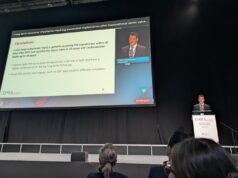A single-centre retrospective study of rehospitalisation after transcatheter aortic valve implantation (TAVI) has found that almost half of patients treated with TAVI were readmitted to hospital within one-year.
The analysis—which was conducted at Rigshospitalet (Copenhagen, Denmark)—has shown that first post-procedural rehospitalisation was more often due to cardiovascular than non-cardiovascular causes. Arrhythmias accounted for approximately 30% of cardiovascular rehospitalisations.
Researchers studied all patients who underwent TAVI at the centre between 2016 and 2020, who were followed at patient-level during the first year after their index admission. Patient’s medical records were reviewed to validate the cause of rehospitalisation and mortality. The investigators studied 1,403 consecutive patients who had undergone TAVI from 2016 to 2020, with a median age of 80 years.
Findings of the study were presented by Pernille Baekke (Rigshospitalet, Copenhagen, Denmark) at PCR London Valves (27–29 November, London, UK), shortly after their abstract publication in the European Heart Journal.
The study authors report that within the first post-discharge year, 48.6% of patients were rehospitalised at least once, of which 26.2% were of cardiovascular cause, compared to 22.4% of non-cardiovascular cause. The median length of stay for the first rehospitalisation was 3 days.
Digging into the causes of these readmissions, the researchers note that the most common cardiovascular causes were arrhythmias occurring in 28.1% of the rehospitalised patients. Of these cases, 40.6% required permanent pacemaker implantation. Heart failure (14.4%) and neurological events (14.4%) were other common cardiovascular causes of rehospitalisation.
The most common non-cardiovascular causes were infectious diseases (18.3%), with pneumonia accounting for 40.4% of these readmissions. The first rehospitalisation was elective in 14.8% of the admissions, primarily due to percutaneous left atrial appendage closure (LAAC), cancer or osteoarthritis.
“[HOSPITAVI] clearly demonstrated that there is potential to bring down the rehospitalisation rates and improve outcomes for patients. We also saw that a lot of patients were hospitalised due to an observational cause, indicating that these patients might need a safety net after discharge to be more secure in their own home,“ the study author, Baekke, told Cardiovascular News.
The researchers conclude that further work is needed to explore whether the rate and causes of hospitalisations differ in the general population and to potentially establish a risk model to predict patients at high risk of rehospitalisation.













